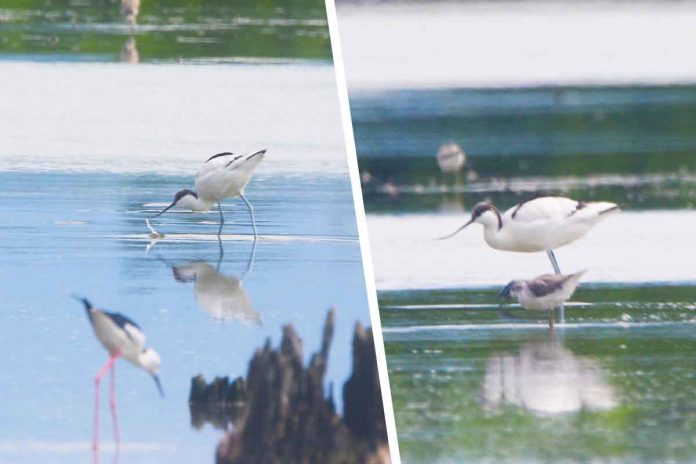
ILOILO – The Pied Avocet (Recurvirostra avosetta), a rare migratory bird, was seen and recorded during the conduct of the Asian Waterbird Census in Barangay Latasan, E.B. Magalona, Negros Occidental on Jan. 17.
It was the first record of the species in the island and in Western Visayas, said Forester Rosie Pablico, chief of the Conservation and Development Section of the Negros Occidental Environment and Natural Resources Office.
Avocet species have boldly pied plumage, long bluish-gray legs, and a slender and strongly upcurved bill. It was first recorded in the country in Puerto Princesa, Palawan, on March 8, 1991.
“We don’t know exactly what caused the waterbird to change its course and migrate here in the Philippines, specifically in the province of Negros Occidental. This is another first for us. We know, however, that the continuous visit of migratory birds year in and year out only prove that we have rich wetlands,” said Regional Executive Director Livino B. Duran of the Department of Environment and Natural Resources (DENR).
On Feb. 4, 2017, the region also welcomed the arrival of Brent goose (Branta bernicla nigricans) in the coastal areas of Hinactacan, La Paz, Iloilo City. That was the first country record.
Then on July 20, 2018, the Christmas Frigatebird (Fregata andrewsi) made its first recorded visit in Panay Island, particularly over the coastal road in Dumangas, Iloilo.
On Nov. 29, 2020, the Glossy ibis (Plegadis falcinellus) made a surprising touchdown on the Hinactacan wetlands.
Beautiful winged visitors are here again with their migration that started in September last year and will end by March this year. The conduct of the Asian Waterbird Census provided valuable data that helped government authorities identify wetland sites for priority protection and management and also set aside wetlands of national and international importance.
Such is the classification of the Negros Occidental Coastal Wetlands Conservation Area (NOCWCA), which happens to be the 7th Ramsar site in the country. (With a report from the Department of Environment and Natural Resources 6)/PN



